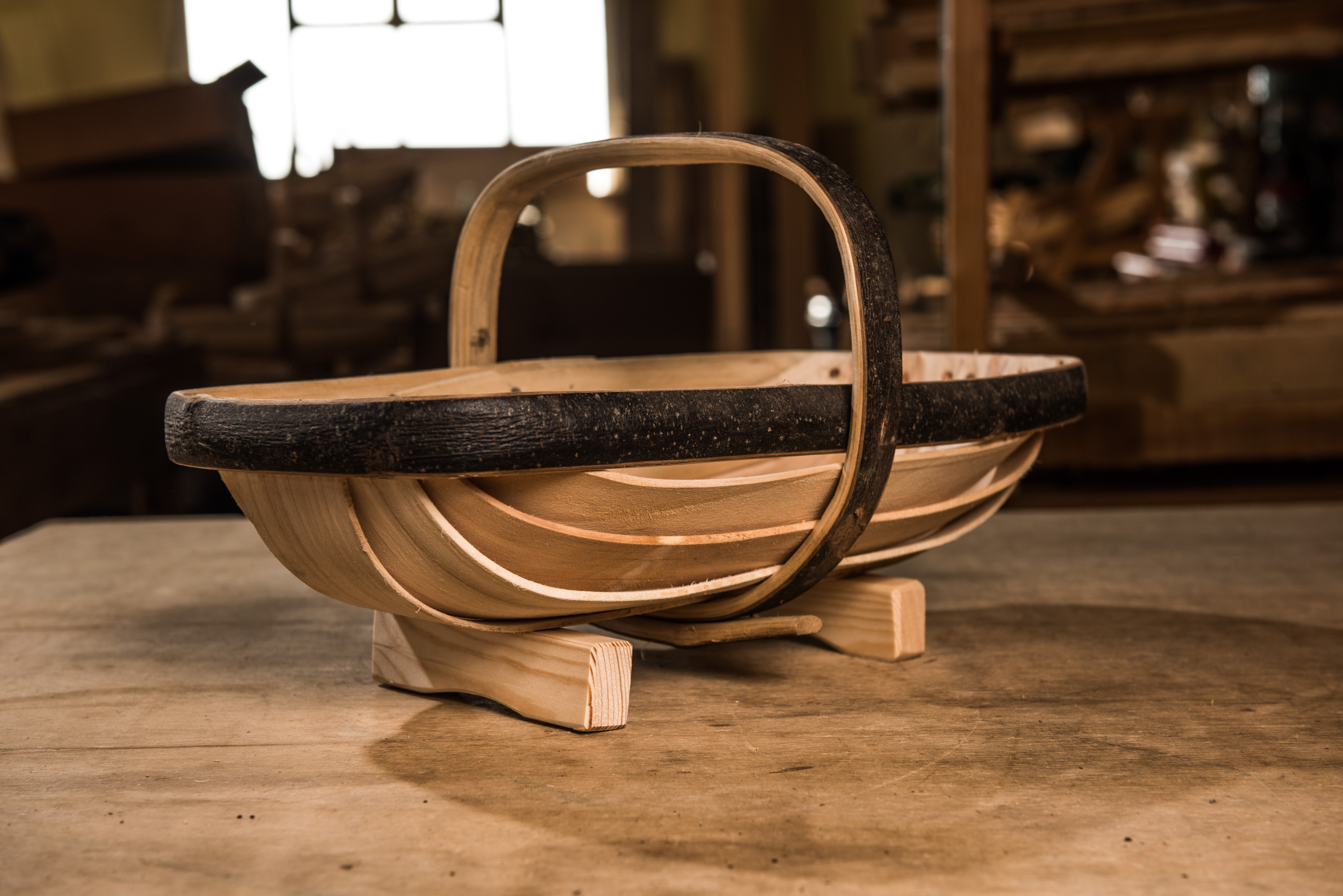Sussex trug on:
[Wikipedia]
[Google]
[Amazon]
 A Sussex trug is a wooden
A Sussex trug is a wooden
 A Sussex trug is a wooden
A Sussex trug is a wooden basket
A basket is a container that is traditionally constructed from stiff fibers and can be made from a range of materials, including wood splints, runners, and cane. While most baskets are made from plant materials, other materials such as horsehai ...
. It is made from a handle and rim of coppiced
Coppicing is a traditional method of woodland management which exploits the capacity of many species of trees to put out new shoots from their stump or roots if cut down. In a coppiced wood, which is called a copse, young tree stems are repeate ...
sweet chestnut
''Castanea sativa'', the sweet chestnut, Spanish chestnut or just chestnut, is a species of tree in the family Fagaceae, native to Southern Europe and Asia Minor, and widely cultivated throughout the temperate world. A substantial, long-lived ...
wood which is hand-cleft then shaved using a drawknife
A drawknife (drawing knife, draw shave, shaving knife) is a traditional woodworking hand tool used to shape wood by removing shavings. It consists of a blade with a handle at each end. The blade is much longer (along the cutting edge) than it is d ...
. The body of the trug is made of five or seven thin boards of white willow
''Salix alba'', the white willow, is a species of willow native to Europe and western and central Asia.Meikle, R. D. (1984). ''Willows and Poplars of Great Britain and Ireland''. BSBI Handbook No. 4. .Rushforth, K. (1999). ''Trees of Britain an ...
, also hand-shaved with a drawknife. They may have originated in Sussex because of the abundance of chestnut coppice and willows found on the marshes. Nails or pins used are usually copper, to avoid rust.
Shapes and sizes became standardised, the most well-known shape being the "common or garden" trug ranging in volume from one pint to a bushel. However, there is a diverse range of traditional trugs from garden and oval trugs to the more specialised "large log" and "walking stick" trugs.
History
The trug industry is believed to date from the 1500s with active trade in Horsham, although Richard Acres of Rotherfield in Sussex is recorded as a trug maker in a 1485 document. Thomas Smith ofHerstmonceux
Herstmonceux ( , ; ) is a village and civil parish in the Wealden District of East Sussex, England, which includes Herstmonceux Castle.
The Herstmonceux Medieval Festival is held annually in August.
History
The name comes from Anglo-Saxo ...
, displaying his trugs at the Great Exhibition of 1851
The Great Exhibition of the Works of Industry of All Nations, also known as the Great Exhibition or the Crystal Palace Exhibition (in reference to the temporary structure in which it was held), was an international exhibition which took pl ...
, gave the basket wider renown: he was rewarded when Queen Victoria
Victoria (Alexandrina Victoria; 24 May 1819 – 22 January 1901) was Queen of the United Kingdom of Great Britain and Ireland from 20 June 1837 until her death in 1901. Her reign of 63 years and 216 days was longer than that of any previo ...
purchased several for members of the Royal Family. Further appearances at international exhibitions followed at the 1855 Universal exhibition in Paris; the First International Forestry Exhibition in Edinburgh 1884; and the International Inventions Exhibition
The International Inventions Exhibition was a world's fair held in South Kensington in 1885. As with the earlier exhibitions in a series of fairs in South Kensington following the Great Exhibition, Queen Victoria was patron and her son Albert Edw ...
in London.
By the 1970s, Herstmonceux remained as a significant centre of trug production, with four firms operating in or near that village: Greens of Hailsham
Hailsham is a town, a civil parish and the administrative centre of the Wealden district of East Sussex, England.OS Explorer map Eastbourne and Beachy Head Scale: 1:25 000. Publisher:Ordnance Survey – Southampton B2 edition. Publishing Da ...
, R. Reed, R.W. Rich and Sons, and Thomas Smith and Sons.
References
External links
* {{Sussex Gardening tools Basket weaving History of Sussex Economy of East Sussex